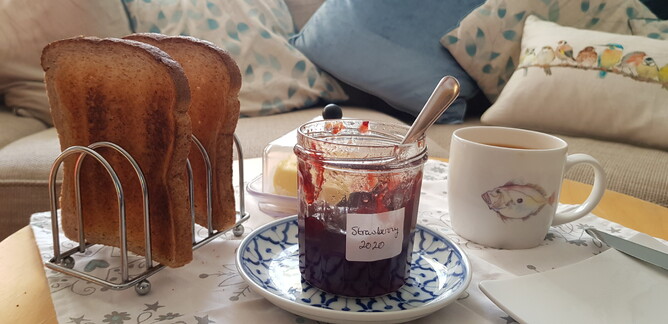Within my practice I incorporate principles and techniques from many well researched therapies, including CBT. One of the aims of CBT is to help us to become aware of when we are stuck in negative thinking loops and to help us to find the exit paths from those loops.
Choice is one of the keys
One important aspect of CBT is to help us identify all the choices we have in a situation. This is important as anxiety tends to narrow our focus of attention to just the unhelpful choices.
I find analogies from every day life useful in explaining some of the principles of CBT.
Cutting down choices is sometimes the answer
I don’t quite know why but I have an interest in understanding the science and psychology of selling, despite not actually liking shopping and never having working in sales.
One thing I recall learning is that it is possible to have too much choice. So for example when sampling delicious jams or chutneys at a local market stall, if you’re presented with too many options then you may find you can’t decide which you like best and as a consequence don’t buy any of them.
Curious isn’t it how we may be in the happy situation of having lots of choices, each we would be perfectly happy with, and yet we walk away without any of them?
So perhaps rather counterintuitively the solution for the stallholder is to offer less choice, to make the purchasing decision easier.
So reducing choice can stop procrastination in its tracks.
Sometimes we need more choices not fewer
We can use this idea in a different way if we find we have a tendency to jump to negative conclusions too quickly.
So perhaps when we leave a friend a message and they don’t call us back, we might go straight to the conclusion they’re avoiding us or don’t like us.
If we think back to the jam selection problem it’s the equivalent of putting out too few choices. We’ve only set out jams we don’t like and no other jams are available. But instead of walking away from the stall we instead feel compelled to choose one of them.
So interestingly our solution is the opposite of the stall holder’s, it’s to become aware of and lay out so many different jams that we realise we can’t choose any of them.
We deliberately generate an “I don’t know” response – which if you think about it is just want you want when you leave a message for someone and they don’t call back. Because unless you have a crystal ball you really don’t know which of the myriad possible reasons it is – Are they busy? Have they forgotten? Is their phone broken? Are they having to deal with something important? Are they just having a bad day? “They’re avoiding me” is a possibility but is just one of many……....
The thought loop is broken by becoming aware of just how many possibilities there are in addition to the ones we usually consider.
So whether you can’t make decisions or make decisions too quickly, presenting ourselves with an appropriate number of choices can be very useful indeed.
CBT is just one of the approaches I use to help my clients make the changes they are looking to make. I also use Parts Therapy, Regression Therapy and Imaginary Rehearsal.

